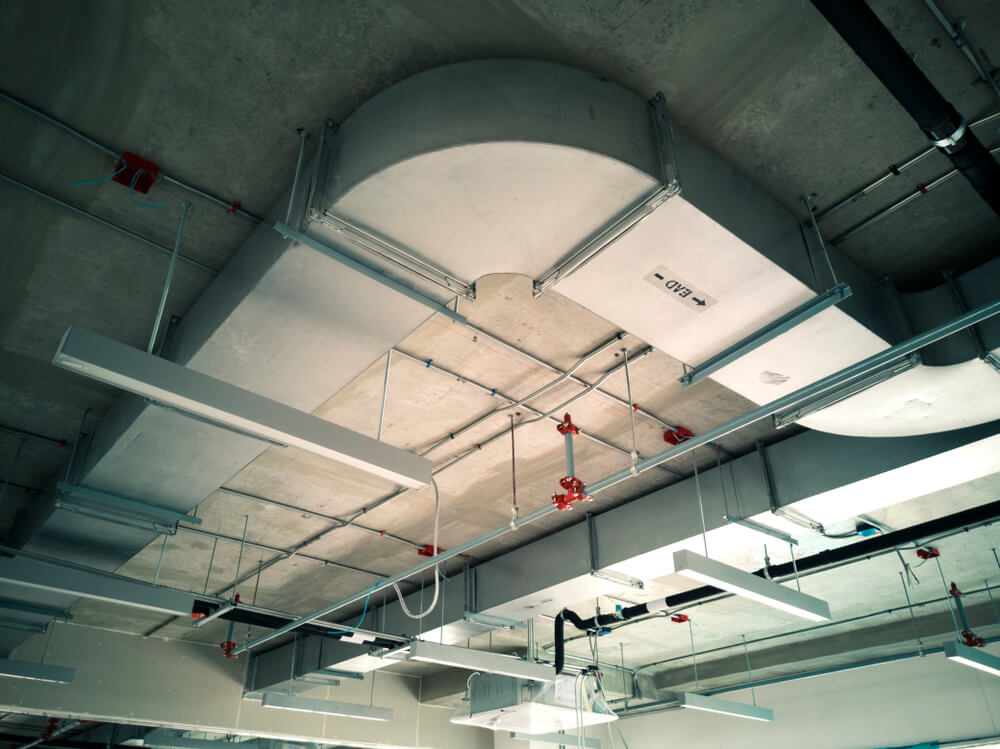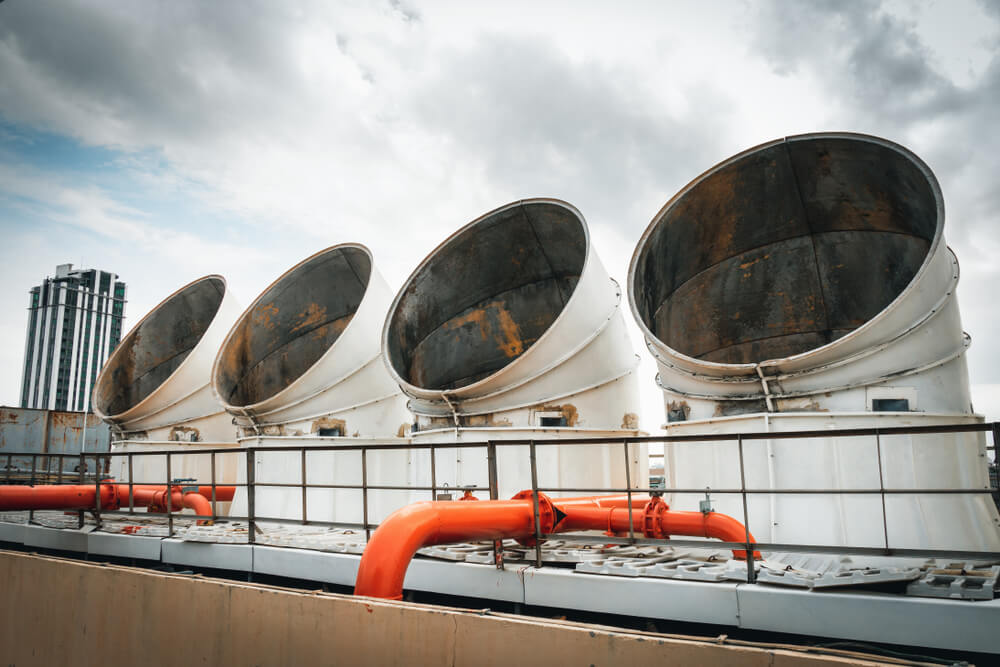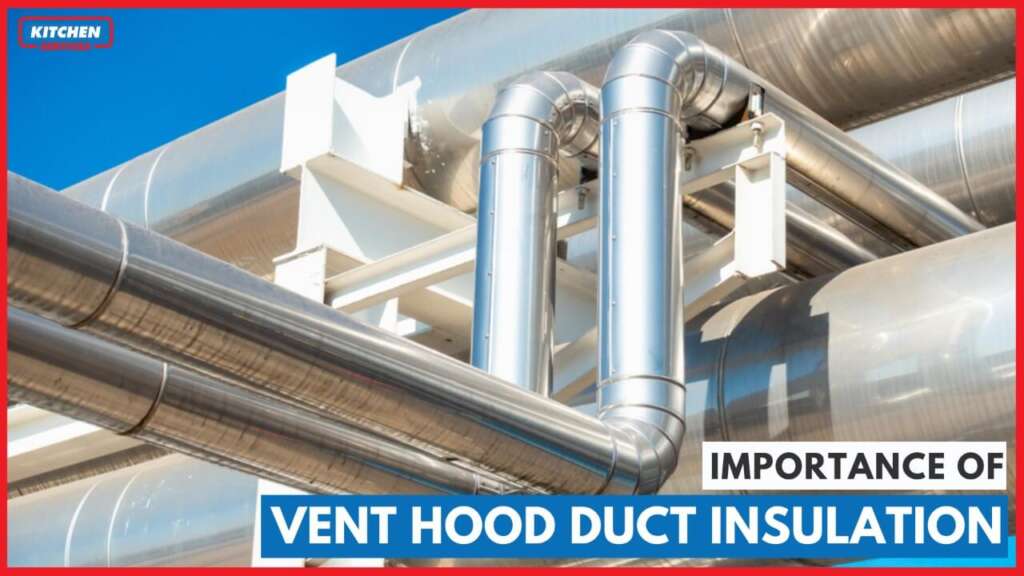Insulating the ductwork of your commercial kitchen and stove vent pipe can be one of the best ways in order to decrease heat loss, noise as well as improve the productivity of your commercial kitchen’s both heating and cooling system. Even though a lot of the times building owners sometimes may overlook the importance of vent hood duct insulation and insulating other appliances which also use ducts like kitchen and bathroom exhaust systems.
You can take into account some of the facts so that you may decide if installing vent insulation on the ductwork utilized by your kitchen range vent hood proves to be the best option for your commercial kitchen or not.
Here are some of the benefits of insulating your stove vent pipe.
Benefits of insulation for your stove vent pipe

Duct insulation can be one of the most easy methods for you to achieve energy productivity in your commercial kitchens.
Stove vent pipe
Ductwork usually includes all of the piping that is there in your restaurant or any commercial building which is used for cooling or heating air circulation. There are many more benefits that you could consider when we talk about duct insulation. Without proper duct insulation, cool air has higher chances to cause condensation and drip from all the pipes, which may lead to many humidity issues as well as biological growth. Here are the 3 main reasons for you to consider insulation for your stove vent pipe in your own house.
Lower Electricity Bills
You might observe a lot of causes behind an ineffective heating and cooling system. Nevertheless, insulating the ductwork can be one of the initial steps you may take in order to make these systems more effective while you may also decrease your energy bills at the same time. not to forget that you can benefit from duct insulation in both the colder and warmer months of the entire year.
Improved Comfort
As we know that the comfort of any of your buildings is always influenced by its temperature levels, so controlling temperature fluctuations is one of the major reasons you can have in order to have a better HVAC system in the 1st place.
As it is obvious that good duct insulation isolates your entire building against any outside temperatures, it will also keep the home at a more stable temperature as well as it raises your comfort.
Lower Levels of Noise
Keep in mind, you never have to be scared of all those weird noises that your ductwork may make. Your ductwork has the tendency to produce every kind of odd noise. All the air that is blowing through your ducts can make whistling, rattling, buzzing noises. In the winter season, these metal ducts would expand as the heated air travels through them, and they will contract when the system is shut off, this expansion and contraction may cause a lot of popping and creaking noises. Duct insulation will not remove these sounds, but it would definitely act as a damper that may greatly decrease the noise level.
Vent Insulation for Oven Hoods parking lot

Using a properly installed vent hood over the cooking range would help in removing all the bad odors as well as smoke, and it will also keep your whole team safe just by removing excess carbon monoxide, other gas odors, as well as other harmful stuff that is there in the air which is around the cooktop.
Some of the range vent hoods may use these filters so that they can remove all the harmful particulates and circulate the air back into the kitchen. More common, however, are vent hoods that ventilate air directly out of the home through a system of ductwork.
Insulation around range hood duct
Just like all the other duct systems in the building, insulation around range hood ducts may help in reducing the nuisance noise and any sort of vibration. But most importantly, insulating ductwork, wherever ducts run through unheated parts of the building, can prevent any sort of air loss through all these thin metal ducts. Insulation would prevent the buildup of condensation and the moisture issues that may result from condensation accumulation.
Kitchen exhaust duct insulation material
As the ductwork insulation is concerned, the United States Department of Energy suggests rigid fiberboard insulation in order to insulate your ductwork. You may install the insulation according to the directions of the company. Before you begin with the insulation, however, you may have to seal all the openings that are there in your ductwork, insulating ductwork with unsealed openings is an exercise in futility at best.
The high R-value duct insulation for rigid fiberboard is R-6.5 to R-6.8, which is made of polyisocyanurate foam. This kind of insulation has reflective foil on both sides, with a foil vapor barrier to the back and a white foil finish on the front. Extruded polystyrene (XPS) rigid foam insulation has an R-value of about R-5 and expanded polystyrene (EPS) has an R-value of about R-3.8. Use mastic sealant or metal tape instead of duct tape. Contrary to its name, duct tape doesn’t actually provide a good seal, and it degrades quickly.
Other insulation considerations
As is the case with insulation in other parts of your building, you always have to frequently check as well as maintain the insulation on your entire ductwork. In case the insulation all around your vent hood ductwork has become waterlogged because of any roof leaks or the same issue, the efficacy of insulation will be disturbed in so many ways. And in case the insulation is disturbed in any case, it can make a satisfactory environment that will invite any of the moisture issues that may be inside the ducts.
You can also check the insulation all around your ducts at least once a year and replace any parts that have become compromised. It would be the best idea if your kitchen exhaust fan discharges to the outdoors and does not exhaust into the attic and soffits or to any crawl space. If the run is long, you will need to have a big fan, so you will have to check with any certified professional.
Always keep in mind that all the joints should be sealed, and if the duct runs through an unheated space, they need to be insulated. So the question here arises that how do you seal a range hood duct? Well, if the gaps are more than 1”, they might be sealed from the attic side with air-blocking material like rigid foam that’s cut to fit and sealed in place with caulk or spray foam. You may also use caulk, etc. so that you can air seal the vent to the exterior wall.
If you are looking for air duct insulation installation service providers in Los Angeles then call Kitchen Services now. Kitchen Services provide competitive price and high quality service.
FAQ’S
Can I use an insulated flexible duct for the range hood?
According to IRC, the duct has to be made from galvanized steel, stainless steel, or copper. The duct must have a smooth interior and it definitely has to be airtight. This actually means that you are not going to use any flexible product for this application rather you particularly that flexible plastic crap. Instead of this, you should use a rigid duct.
How do you insulate a duct?
A good practice would be that you wrap the whole duct with R-3 to R-8 insulation, but in case, nothing else is there you would need to at least wrap the six feet of the duct that is inside the termination point, that is exactly is where condensation will have to happen. You can keep the vent lower and run the insulation over the duct.
Should a vent hood duct be covered?
In order to protect your vent hood duct from any sort of damage, we would highly recommend that you should cover the duct in your cooking space with the help of any stainless steel chimney. actually, the chimney can completely cover the ductwork in your kitchen. Which actually makes the hood look more appealing and keeps the duct well-protected as well.
Should a vent hood duct be above the roof?
In this case, you may have two options to vent your hood duct, one option would be horizontally through a wall and the other option would be vertically through the ceiling.
So, typically, you can cap off your vent with a wall cap or roof cap. So a vent hood duct will not be above the roof, but you can rather install a roof cap. It would keep any sort of debris, dirt, and small animals from getting inside your vent hood duct and your building.
What type of duct is best for venting a range hood?
According to deep research, the rigid duct can be the best duct for a range hood. As it is a cost-effective and durable option for your range hood vent. And not to forget the higher the CFM of your range hood, the larger the duct you’ll need.
Does the kitchen exhaust duct need to be insulated?
You can insulate your vent hood duct, but it’s not required. Insulating your vent hood duct will keep the noise down and keep your greasy kitchen air from escaping into your joists and attic.
How to insulate range hood duct?
- Apply foil tape to horizontal seams in the ductwork.
- Apply duct sealant to the elbows and use it to secure the tape in place.
- Wrap some foil tape around the ductwork one full circle.
- Extend the tape an additional two to three inches then cut it.

